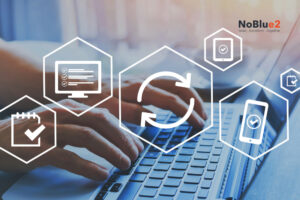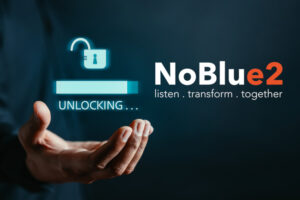Can you implement a new software system when all your staff are working from home? The answer is yes – but it is inconvenient. During the pandemic, when it’s hard – or perhaps impossible – for staff to be in the office, you’re going to come across some issues. Unless you’re implementing a cloud solution, that is.
Implementing non-cloud software can be complex and cause disruption for your staff and the way your company works. Here are some of the difficulties you may encounter, and which you will need to consider when implementing software during the pandemic.
Configuration
As a result of user acceptance testing, you may discover that your new system needs some configuration tweaks. To do this with on-site software, everyone needs to be logged out of the system while the changes are made. During normal times, where your new system was being implemented by engineers on your own site, this would be simple. You can go around the office asking everyone to log out while the changes are made, and then let them know that they can use the software again once the configuration changes have been made.
However, during the pandemic, while everyone is based at home, this is very hard to accomplish smoothly. Everyone needs to log off while the changes are made, and with most people working off site, you need to coordinate that they all log off at the same time. And afterwards, you’ll need to communicate with everyone to advise them that they log back in. With cloud-based software – like NetSuite ERP – it’s simple to configure changes even while all your users are logged in. The changes that are made become live for everyone as soon as they are made, just with a simple screen refresh.
This means that you don’t even need your software partner to be on site making the changes and ensuring everyone is out of the system. It can all be done remotely and without the need to wrangle everyone to act at the same time and to communicate that changes are taking place.
Training
When it comes to training your staff on a new system, you would ordinarily physically gather people together for in-person training sessions. You would also have your software partner set up the system in advance of the training, perhaps pre-configuring specific situations for the training.
In the current pandemic though, it’s impossible to get people together – it can hardly be classed as an essential journey, and anyway, your staff might be hesitant to meet up with colleagues or commute at the moment. So, you will need to conduct your training remotely, with each employee working from their home. This carries the risk of all sorts of issues.
Imagine the scenario where one of the participants’ VPN-enable computer is not connecting properly to the server. In the office, in normal times, this can be sorted very quickly, or trainees can share resources. But at the moment, you would need to arrange to configure a new workstation and send it to them before they can be trained. This would disrupt the training, meaning it has to be run again separately for that one staff member, or re-scheduled altogether.
If you’re implementing cloud software though, trainees can all access the software via a web browser, with just a login required.
Although staff may well be coming back to the office over the next few months, we can’t discount the fact that there might be future restrictions – perhaps brought in suddenly. Staff may be required to work from home again at short notice, travel could be limited, and your carefully planned and timed induction training could be impacted.
Equally, if your software is on-premises and training is needed, then all existing users need to be logged out while the system is configured for the training and while it takes place. With home working, this is not only a challenge to arrange, but also disruptive to the working of your business operations.
Computer issues
Once your system has gone live, your users will need uninterrupted access. With on-premises software, if an employee’s computer stops working, they are left completely unable to use it, preventing them from working. For functions like Finance, this might mean days of productivity are lost while a new computer is arranged. Having to configure a VPN with all the necessary security settings, anti-virus software, Microsoft Office programmes, communications software, connections and so on needs to be done by your IT department and could take as much as a week or more.
On the other hand, with cloud-based software, at any time the employee could grab a family member’s tablet, or someone else’s laptop, or even their mobile phone, and still have access. This means they can still work or can still take part in user acceptance testing or in training – with barely any interruption.
Upgrades
When your on-premises software is fully installed and up and running, there will come a time when it needs to be upgraded. This causes disruption in your business once again, with everyone needing to be logged out of the system while it takes place. And it’s rarely quick, especially for major upgrades, which typically take at least a day.
The extra time it takes for a software vendor to implement the upgrade could conceivably double the number of days required for implementation, increasing your costs.
Furthermore, losing that amount of time has a bearing on productivity levels and a cost impact for the company. Because of this, most companies will try to run upgrades while most users aren’t working with the system – at weekends or overnight, for example, and this incurs extra costs. This is also a reason why companies will put off upgrading, perhaps missing out on upgrades and only doing them once a year. In the meantime, though, they have missed out on the benefits of six months worth of extra functionality.
There might also be issues with individuals’ computers. Because everyone is based remotely, this again causes the situation where a VPN glitch could result in one staff member missing out on the upgrade and needing to return their PC to the office to be re-configured.
With cloud-based systems, it’s unnecessary for anyone to be on site at your office or wherever your server is located. That includes your IT people, your vendor partner, and your users, whether they are in admin, finance, sales, or purchasing. If you sell across the country, then you might have salespeople located all over the UK. If you decide to implement cloud software, then you wouldn’t need them all to congregate in one place for an upgrade or reconfiguration of their settings. There’s no need for anyone to travel or to put themselves at any risk of contracting a virus when they can immediately take advantage of the upgrades that have been done centrally by the cloud computing provider.
Implementing new software in a pandemic: cloud is vital
Implementing software is complex and involved enough. You need to get senior management buy-in, maintain a cohesive project team, keep the implementation on track and within budget, ensure your users are on board and not resistant to the change, and so on. You don’t really want the additional level of hassle that comes with co-ordinating all of this at the same time as negotiating the issues of implementing on-premises software during the pandemic.
If you want to avoid some of these problems and have a lower risk of anything going wrong during the pandemic, then the simple decision is to choose cloud software.
NetSuite is powerful, cloud-based ERP software that runs your entire operation and helps your staff work from home. For a free consultation or a quote based on your business needs, book an appointment now or contact us for more information.










